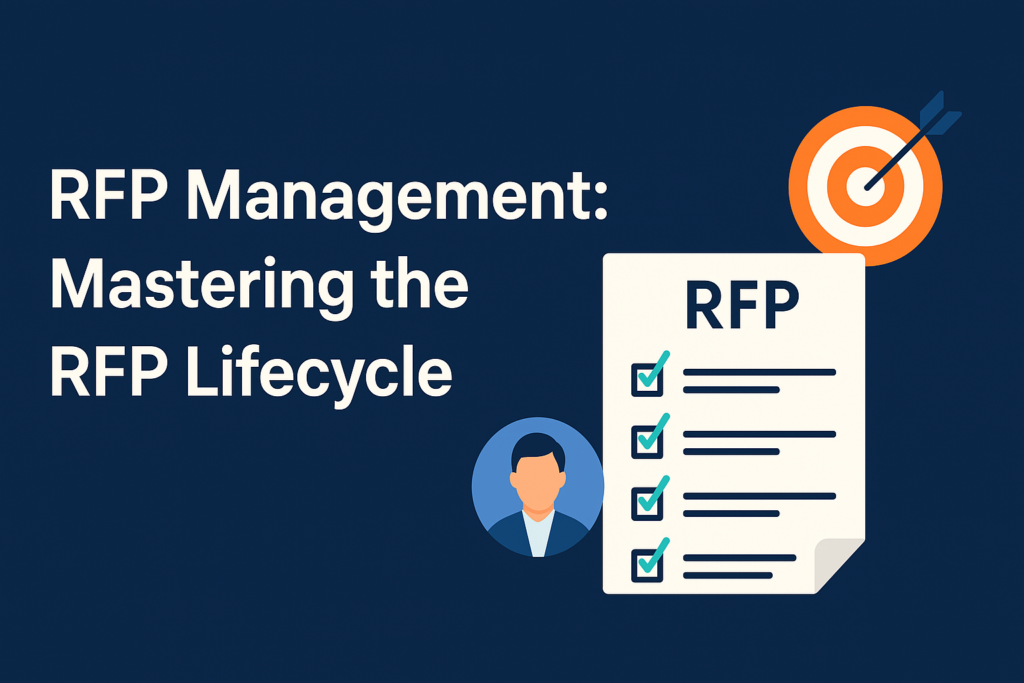The first stage in the RFP lifecycle is opportunity assessment. This phase involves identifying whether a potential RFP is worth pursuing and evaluating how it aligns with your organization’s goals. Proper opportunity assessment ensures that your team focuses on the most viable bids, avoiding wasted time and resources on unfavorable opportunities.
Without a solid opportunity assessment process as part of your RFP management strategy, teams can fall into the trap of chasing every RFP that comes their way. This scattergun approach often leads to wasted resources, lower win rates, and burned-out teams. In contrast, a smart, focused opportunity assessment ensures that you allocate your efforts toward proposals that you are truly positioned to win.
Opportunity Assessment: Understanding Its Purpose
Opportunity assessment in RFP management serves as your first filter. Not every RFP is a good fit for your business. It’s tempting to think more bids equal more chances to win, but in reality, the quality of the opportunities matters far more than quantity.
When your RFP management process includes a rigorous opportunity assessment phase, your team can better prioritize which RFPs to pursue based on factors such as organizational fit, competitive advantage, potential profitability, and alignment with strategic goals. You save time, improve morale, and most importantly, increase your overall win percentage.
Opportunity assessment allows decision-makers to make informed, data-backed choices instead of relying on gut feelings. It transforms your approach to RFPs from reactive to proactive — and that’s a powerful shift.
Opportunity Assessment: Core Criteria for Effective Assessment
To make opportunity assessment effective within RFP management, organizations should evaluate each potential RFP against a consistent set of criteria:
- Strategic Fit: Does the RFP align with your company’s mission, vision, and long-term goals?
- Capability to Deliver: Do you have the technical expertise, staffing, and resources to meet the RFP’s requirements without overextending your team?
- Competitive Position: Do you have an edge over your competitors — whether through unique offerings, past relationships with the client, or proven success in similar projects?
- Financial Considerations: Will the return on investment justify the cost of pursuing and fulfilling the project?
- Timeline and Workload Impact: Can your team realistically meet the deadlines without negatively impacting other projects?
By weighing each opportunity carefully, RFP management becomes a strategic business function rather than just a procedural one.
Building a Framework
Developing a standardized framework for opportunity assessment is essential for consistent success in RFP management. Here’s a simple process your organization can adopt:

- Preliminary Screening: Quickly eliminate opportunities that are an obvious mismatch, based on high-level criteria.
- Detailed Evaluation: Score each opportunity against a set of weighted factors that are important to your organization.
- Stakeholder Collaboration: Bring together representatives from sales, technical, and leadership teams to evaluate the opportunity from multiple perspectives.
- Go/No-Go Decision: After evaluation, make a clear, documented decision on whether to pursue the RFP.
- Documentation and Feedback: Record the decision and key findings for future reference. Use these insights to refine your RFP management strategy over time.
Having a formal process in place ensures that opportunity assessment doesn’t become an afterthought — it becomes a disciplined part of how your organization approaches growth.
Common Mistakes
Even with a good framework, it’s easy to fall into traps that undermine effective opportunity assessment in RFP management. Some common pitfalls include:
- Chasing every opportunity out of fear of missing out (FOMO).
- Underestimating resource requirements and overpromising to potential clients.
- Failing to involve key stakeholders early in the assessment process.
- Relying too heavily on personal bias rather than objective criteria.
- Ignoring past data on why previous proposals were won or lost.
Avoiding these mistakes will make your RFP management efforts much more focused and successful.
The Long-Term Value of Opportunity Assessment
When opportunity assessment becomes a regular part of your RFP management process, the benefits compound over time. Teams become more skilled at spotting good opportunities early. Win rates go up. Resources are used more efficiently. Employee satisfaction improves because your team isn’t burning out on low-probability bids.
Moreover, your organization builds a reputation for bidding intelligently and executing well — making you a more attractive partner for future clients.
In conclusion, opportunity assessment is not just a box to check — it’s the strategic heart of smart RFP management. By investing the time to assess opportunities properly, you position your organization for greater success, more wins, and healthier growth.
Remember: in RFP management, pursuing the right opportunities is just as critical as crafting the perfect proposal.





